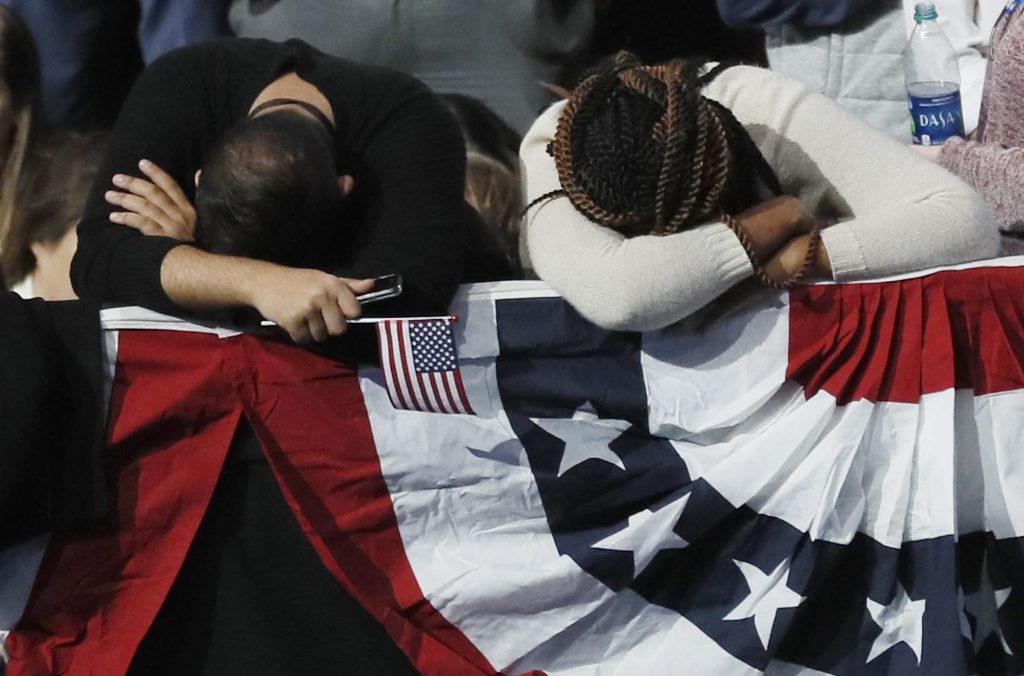On October 16, 2016, on almost exactly this same date, NBC had Hillary Clinton up 11 points. Today, sure ‘nuff, Reuters has Joe Biden up 10, and good old NBC has him up 14. I know, silly season for polls. Even allowing for Hillary’s popular vote majority, the poll was still off by 8.9 points.
That’s EIGHT. POINT. NINE.
And, of course, NBC completely missed the electoral college, which is all that matters.
In previous columns, I’ve pointed out that the state polling was often as bad if not worse. Worse because so many polls at the state level come to the same conclusion, and worse because they were all equally wrong. Take Wisconsin, where the Real Clear Politics average of error was six points. Again, folks, that’s the average. That means some had to be a galaxy off to have the average be six. Or take Ohio, where no poll by anyone had Trump winning by more than five, and only a couple of polls showed him that high. He finished the Buckeye state at . . . wait for it.
Eight. Point. NINE.
We aren’t going to relive the polling follies. But so far one or two pollsters have been pretty consistent, namely Big Data Poll by Richard Baris and Democracy Institute in England, which correctly called both Brexit and Brexit II. Both have Trump winning by holding Florida, North Carolina, Ohio, and Pennsylvania, though they differ on whether Trump also wins Michigan, Wisconsin, and/or Minnesota.
But still, that’s polls. There are some serious problems with polling the 2020 election even for the best of pollsters.
- The China Virus has been massively hyped by Democrats as a means to encourage “vote by mail.”
- The “shy” Trump voter effect, according to Trafalgar’s pollster Bill Cahaley, Baris, and others are far more impenetrable this cycle than four years ago. All any of these pollsters agree to is that enthusiasm for Trump is off the charts while it is barely registering for Joe Biden.
- None of them yet seem to have accounted for the missing student vote. This likely will not show up in the vote by mail statistics and will be noticed on election day.
- Although most pollsters admit that Trump is going to get a higher percentage of the black and Hispanic vote, none of them seem to be adjusting for this.
 So, what are the actual numbers telling us about these factors? First, even some Democrat advisors have noted with some concern the registration wave of Republicans since 2016. This has occurred to a net Republican advantage in every “battleground” state except Colorado. In Florida and Pennsylvania, the shifts have been huge. We just received the final voter registration update from Florida until the election and Republicans have shaved the Democrat lead down to 150,000. This is just half what it was when Trump won the state by 150,000 in 2016. Pennsylvania shows similar gains—but in Pennsylvania, Democrats have a bigger problem with their own voters who plan to vote for Trump.
So, what are the actual numbers telling us about these factors? First, even some Democrat advisors have noted with some concern the registration wave of Republicans since 2016. This has occurred to a net Republican advantage in every “battleground” state except Colorado. In Florida and Pennsylvania, the shifts have been huge. We just received the final voter registration update from Florida until the election and Republicans have shaved the Democrat lead down to 150,000. This is just half what it was when Trump won the state by 150,000 in 2016. Pennsylvania shows similar gains—but in Pennsylvania, Democrats have a bigger problem with their own voters who plan to vote for Trump.
 Florida and North Carolina vote by mail has started, as it has in some other states. Already three million Americans have voted. But the returns in Florida and North Carolina, while absolutely not conclusive, are interesting. First, in North Carolina, ballots returned by white voters are up from 2016, ballots by blacks are down. That would be in keeping with my prediction that not only will Trump win more African Americans this time (12-15%) but that fewer overall will vote, presenting Joe Biden with a damaging shortfall in a key Democratic demographic.
Florida and North Carolina vote by mail has started, as it has in some other states. Already three million Americans have voted. But the returns in Florida and North Carolina, while absolutely not conclusive, are interesting. First, in North Carolina, ballots returned by white voters are up from 2016, ballots by blacks are down. That would be in keeping with my prediction that not only will Trump win more African Americans this time (12-15%) but that fewer overall will vote, presenting Joe Biden with a damaging shortfall in a key Democratic demographic.
In Florida this cycle, the Democrats requested 800,000 more early ballots than did Republicans. Clearly, the pandemic fear generated by the Hoax News media succeeded. And Democrats are returning ballots faster than Republicans, 53% to 27.7%. That is not necessarily good news. Two of the biggest Democrat counties, Broward, and Palm Beach (where, shockingly Republicans out-registered Democrats last month) both mailed out their ballots on September 24, while the “red” counties didn’t send theirs out for another week. Thus, the numbers reflect a one-week head start for the Democrat counties. Look for these numbers to normalize in about a week or two. Already their rate of increase slowed. But for comparison, blue Palm Beach had already returned 18% of its ballots as of Friday, while Brevard (a big red county) had only returned .05%.
The Democrats’ key target in Florida is 565,000: at the end of all early voting, they must lead Republicans by that number just to come in where they were in 2016 when they lost. It’s still iffy, but so far it appears they are on a trajectory to come in well under that, at around 520,000. Again, however, to put it in football terms, the Republicans haven’t even had the ball yet.
 Keep in mind, however, that all returned ballots are not accepted ballots, and as the Wall Street Journal pointed out yesterday, the surge in mail voting is likely to lead to more rejected ballots. At any rate, so far, the returns are too small to make any definitive predictions. But in a week, if the Democrats haven’t increased their percentage lead in Florida and if the black “turnout” continues to be lower than in 2016, it might be time for some Democrat prayer chains.
Keep in mind, however, that all returned ballots are not accepted ballots, and as the Wall Street Journal pointed out yesterday, the surge in mail voting is likely to lead to more rejected ballots. At any rate, so far, the returns are too small to make any definitive predictions. But in a week, if the Democrats haven’t increased their percentage lead in Florida and if the black “turnout” continues to be lower than in 2016, it might be time for some Democrat prayer chains.
Larry Schweikart is the co-author with Michael Allen of the New York Times best seller A Patriot’s History of the United States, author of Reagan: The American President, and founder of the Wild World of History, a history curriculum website for homeschoolers and educators that features US and World History courses for grades 9-12 that include full teacher guides, student workbooks, tests, maps/graphs, and videos for all units (www.wildworldofhistory.com).




